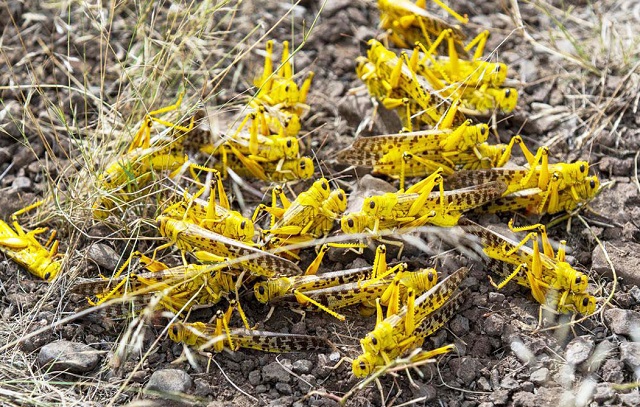
Nairobi, Kenya | XINHUA | Kenya is likely to become free from desert locusts in the near future thanks to roll-out of robust containment measures, a senior official from the Food and Agricultural Organization of the United Nations (FAO) said on Tuesday.
Cyril Ferrand, FAO’s resilience team leader for East Africa, said that Kenya and other Horn of Africa nations have made significant progress towards eradication of the voracious pests.
He said that only two out of the 29 counties in Kenya that were infested by desert locusts in February are yet to contain them.
“In the coming days, that will drop to one county, and within three weeks Kenya should be free of large-scale infestations altogether,” Ferrand said in a statement issued in Nairobi.
He said that FAO is fighting the second generation of desert locusts that have been successful but the threat of possible re-infestation towards the end of the year calls for enhanced surveillance.
Ferrand said that Ethiopia is still infested with a second breeding generation, and also partly re-infested by swarms from Kenya.
He said that from the beginning of January to the end of June, FAO and regional governments had cushioned nearly 600,000 hectares from desert locusts.
“We estimate that so far we have killed over 400 billion locusts in the entire region. That is really a lot. That is 400 to 500 billion locusts that were prevented from damaging crops and rangelands,” said Ferrand.
He said that Kenya’s breadbaskets have been spared desert locust invasion due to robust control measures.
He clarified that locusts have found good locations for breeding as evidenced by widespread damage in the agro-pastoral and pastoral livelihood areas.
“We are still assessing the damage, but we have noticed abnormal poor livestock body condition in areas where desert locusts were present,” said Ferrand.
He said that in Turkana County in northern Kenya, sorghum crops with around 15 to 20 percent damage of the yield linked to the pests had been reported.
“The multiple layers of threats that these communities have been facing is a significant concern and a source of acute food insecurity in the region,” said Ferrand.
******
XINHUA
 The Independent Uganda: You get the Truth we Pay the Price
The Independent Uganda: You get the Truth we Pay the Price


